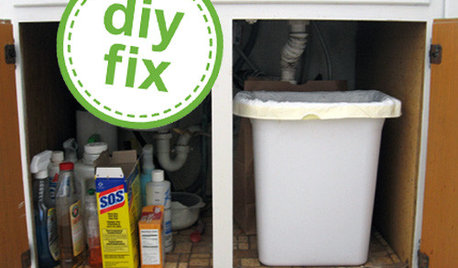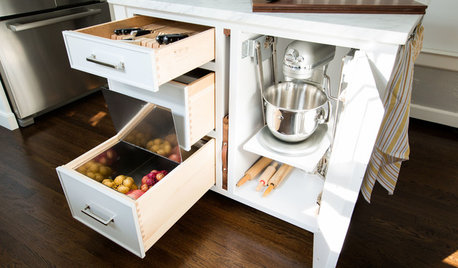maggots in my compost- so gross
havenforpeace
15 years ago
Featured Answer
Sort by:Oldest
Comments (38)
joepyeweed
15 years agolast modified: 9 years agoRelated Discussions
gross mushrooms growing in my cup!
Comments (4)thanks guys. so i can pluck out the mushroom(leave the rest of the mushroom root in there), and it will provide nutrients for my plant? i think its gross since its so unexpected. and furry. i eat mushrooms almost everyday, but to see it grow in such a strange place, with plenty of sun no less. thank god have not seen any slugs....See Moregrubs or maggots in my compost bin!!
Comments (51)I've found that the BSF maggots create the moisture via their effluent and that BSF maggots themselves appearing aren't a sign of too much moisture. My compost is in a vented rotating barrel and pretty much always has BSF maggots, no matter what I do. I've just accepted them. I have noticed a few things--they're great at breaking stuff down and my compost rots much faster than before. They make effluent so make sure you're either filling the compost with dry stuff constantly or have a place for the fluid to drain. I keep a bucket under mine and dump the liquid on my fruit trees, they love it. The buggers can survive sitting in the tub in the sun in the summer in Arizona. As long as you turn the compost a few times a week it doesn't go anaerobic. I use the compost with the maggots in it just fine, it has never damaged my plants. The maggots have a distinct smell they create that kinda makes me gag but if the compost smells like vinegar or crazy putrid rot from a distance, you need to start draining the liquid and aerating. So, weird smell when in touching distance, yes. Terrible smell everyone notices, no. And, I've never noticed swarms of flies in my area. Pretty sure I'm helping support the local bird and lizard population with all the maggots....See MoreMy turkey compost smells gross (part 2)
Comments (20)The reason she did that if you curse on the garden web the comment won't post. I am not the only one who was thinking composting turkeys. If someone is really hardcore, they want to compost everything possible. It's an obsession. Why waste all the turkey after thanksgiving? The bones are like bone meal and the fats add something, I don't know what, but I think composting your turkey is a great idea. If I did not have that pesky compost eating dog, I would do it. I did compost a chicken a couple of times. A turkey is bigger, so you would need a big hot pile or bin to handle that. Hot is the key thing here. In a cold pile it would sit there and collect flies....See MoreHelp! Maggots in my Earthbox & tomato plant is GONE
Comments (15)Bonnie, I am sorry you tossed it out. I agree with bdobs now--don't think they would have been a problem. Just cover with a bit more potting mix. And no you can't use the earthbox without the cover as rain would wet all the fertilizer all the time which you don't want. I have seen people do that but then they would have to mess with adding more fert. as it leaches down and that defeats the purpose of fertilizing once and then forget it. People should maybe put that organic fertilizer they send in the freezer for 24/48 hours before using --that would kill the larvae if it was already infested. Then when you use it be sure and cover with potting mix so flies can't get to it. Don't be too disappointed--they really do work great. I have used organic fertilizer with no problems at all....See Moredigdirt2
15 years agolast modified: 9 years agolouisianagal
15 years agolast modified: 9 years agojoepyeweed
15 years agolast modified: 9 years agoBelgianpup
15 years agolast modified: 9 years agohavenforpeace
15 years agolast modified: 9 years agojoepyeweed
15 years agolast modified: 9 years agoKimmsr
15 years agolast modified: 9 years agojoepyeweed
15 years agolast modified: 9 years agogreenm_sia
15 years agolast modified: 9 years agopetalpatsy
15 years agolast modified: 9 years agojoepyeweed
15 years agolast modified: 9 years agopetalpatsy
15 years agolast modified: 9 years agolorna-organic
15 years agolast modified: 9 years agoKimmsr
15 years agolast modified: 9 years agojoepyeweed
15 years agolast modified: 9 years agopetalpatsy
15 years agolast modified: 9 years agojoepyeweed
15 years agolast modified: 9 years agopetalpatsy
15 years agolast modified: 9 years agoKimmsr
15 years agolast modified: 9 years agogoodfreeman
14 years agolast modified: 9 years agokqcrna
14 years agolast modified: 9 years agodirtydan
14 years agolast modified: 9 years agodigdirt2
14 years agolast modified: 9 years agotoogreen
14 years agolast modified: 9 years agoKimmsr
14 years agolast modified: 9 years agotoxcrusadr
14 years agolast modified: 9 years agojoepyeweed
14 years agolast modified: 9 years agorobertz6
14 years agolast modified: 9 years agotakadi
14 years agolast modified: 9 years agoeureka
14 years agolast modified: 9 years agorj_hythloday
14 years agolast modified: 9 years agotakadi
14 years agolast modified: 9 years agotoxcrusadr
14 years agolast modified: 9 years agojulia_greer_gmail_com
14 years agolast modified: 9 years agopetalpatsy
14 years agolast modified: 9 years agotheowlgoeshoot
12 years agolast modified: 9 years ago
Related Stories

GARDENING GUIDESGet on a Composting Kick (Hello, Free Fertilizer!)
Quit shelling out for pricey substitutes that aren’t even as good. Here’s how to give your soil the best while lightening your trash load
Full Story
MOST POPULARHow to Get Rid of Those Pesky Summer Fruit Flies
Learn what fruit flies are, how to prevent them and how to get rid of them in your home
Full Story
KITCHEN DESIGNQuick Project: Brighten the Space Under Your Kitchen Sink
Give yourself a lift with a refreshed place for your kitchen cleaning supplies
Full Story
ORGANIZINGPre-Storage Checklist: 10 Questions to Ask Yourself Before You Store
Wait, stop. Do you really need to keep that item you’re about to put into storage?
Full Story
INSIDE HOUZZUsing Houzz: Create a Home To-Do List
See how to use an ideabook to keep track of your home projects this year
Full Story
KITCHEN DESIGN16 Practical Ideas to Borrow From Professional Kitchens
Restaurant kitchens are designed to function efficiently and safely. Why not adopt some of their tricks in your own home?
Full Story
CONTAINER GARDENSPatio-Perfect Berry Bushes Like You’ve Never Seen
Small enough for pots but offering abundant fruit, these remarkable bred berries are a boon for gardeners short on space
Full Story
LIFEThe Top 5 Ways to Save Water at Home
Get on the fast track to preserving a valuable resource and saving money too with these smart, effective strategies
Full Story
HOUZZ TV FAVORITESMy Houzz: New Life and Style for a 1976 Airstream
The owner of this 1976 Ambassador Airstream embraces flexible furniture and clean, organized spaces
Full Story
KITCHEN OF THE WEEKKitchen of the Week: Storage Galore in a 1920s Colonial
Pullouts, slots, special drawers and more — this customized kitchen packs in plenty of organizing solutions
Full Story



joepyeweed